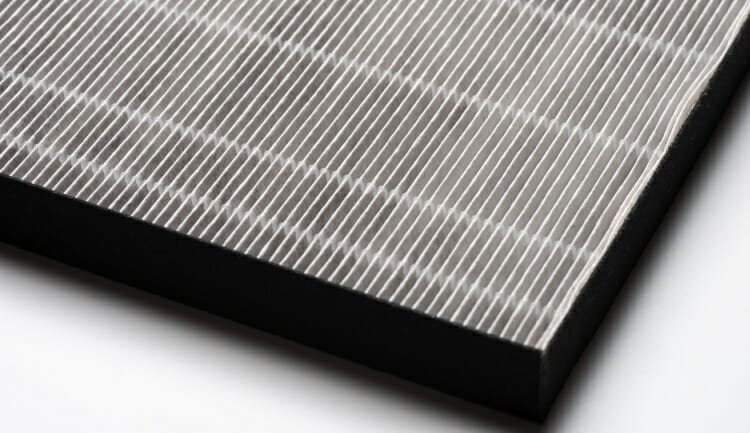Scheduled Maintenance Means Commercial Air Purification Equipment Works Well and Saves Operation Budget
Successful building engineers track air filter changes and find ways to minimize spending on HVAC maintenance and upkeep.
But carefully-planned filter changes can actually support both in critical environments.
Criteria for Changing HEPA Filters
There are three basic reasons to replace your air filter.
For this reason to be applicable, the filter would have to be extremely dirty, or the system designed on the edge of its capacity to need to change the filter. Changing requirements could also prompt the filter to be considered “too clogged.”
Filters actually improve at trapping particles as they get dirty. Filtration efficiency is not generally a consideration in replacing a filter. However, failing at efficiency could be due to media or seal damage.
This is the most common reason to change the HEPA filter. Be sure that you’re considering more than just electricity and filter costs when replacing your air filter.
Determining Thresholds for Air Filtration Changes Due to Operating Costs
The criteria we have the most control over as building operations managers is the minimization of operating costs.
A common rule of thumb is that once filters are 150 percent of their initial pressure drop, it is cost-effective to change them. However, system design and fan efficiency are major influences on this. It’s a trade-off between capital expenditures to improve initial efficiency and recurring costs of power, downtime, and filters. If you didn’t influence the design and budget for your system, you’ll need to spend your time optimizing filter changes.
Monitoring power consumption allows you to determine the point at which filter replacement provides sufficient power savings to justify the cost of the filter. You’ll also need to consider the downtime necessary for filter replacement.
For clean rooms, availability is vital, so operations managers schedule filter changes every six to 12 months and perform them all the same day to minimize room downtime. These are relatively arbitrary intervals, and you should calculate ones that will allow for significant savings, especially if your HVAC system allows you to directly monitor power.
How System Design Plays a Role
If you were able to play a role in the design of the commercial HVAC equipment in your building, you have opportunities to proactively reduce operating costs, such as through specifying thicker media packs in air filters, adding more or larger air filter units, or selecting higher-efficiency fan motors.
AJ Manufacturing’s lighted units allow for more filter area in the same ceiling space, because the units eliminate the need for separate lighting. And our Criti-Clean Ultra line of fan filter units come with some of the highest-efficiency motors available to reduce power consumption. This product is compatible with all our other commercial stainless steel HVAC products.
How to Reduce Operating Costs of Existing Systems
Using deeper HEPA filter media extends the time between filter changes and reduces overall power consumption.
For example, the high flow filters from AJ Manufacturing accommodate more dirt, and can be specified to reduce downtime and power consumption of a fan filter unit or HEPA diffuser. They’re backward-compatible with most of our HEPA products.
You also can reduce operating costs by rebalancing the system with minimum damping. If you dampen the system at every duct, then the supply system is overworked. However, balance the system so that at least one damper is fully open, with the supply fan running at the minimum power to provide the required CFM.
If your supply fan variability doesn’t allow for this, it may not be possible. An upgrade to an EC motor that can be variably controlled will improve efficiency and may reduce operating costs enough to justify their expense. The EC motor in our Criti-Clean series fan filter units are designed to save you significant money.
Upgrade to the Criti-Clean Ultra Line of FFUs
Criti-Clean Ultra Fan Filter Units by AJ Manufacturing are fan-powered laminar flow HEPA filter diffusers that remove airborne contaminants in your critical environment. In both louvered and two-chamber designs and a variety of styles and configurations, the Criti-Clean Ultra continually produces a non-aspirating, low-velocity downward-moving “piston” of HEPA-filtered air, with optional built-in lighting and UV-C radiation modules.
Learn more about them on our website, or contact one of our experts to order new commercial HVAC equipment for your critical environment today.

